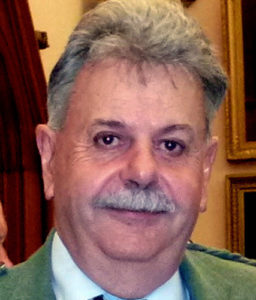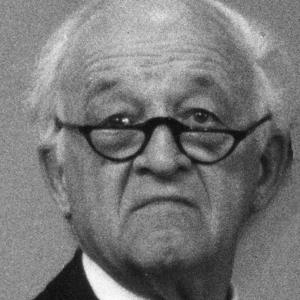
In his letters James Campbell elaborated on John MacDonald’s interpretative choices and featured The Park Piobaireachd No 2 as an example. The grip timings in the Taorluath variation in which the more established pointing appears in the Piobaireachd Society book differs from the Kilberry Book where the pointing is reversed. In 1933 John MacDonald had apparently played in the Clasp at Inverness with the pointing as per the KB.
Bearing in mind its first edition appeared several years later, MacDonald could not have taken the tune from that source. Did Archibald Campbell get the notion of the timing for the Kilberry Book from the playing of John MacDonald? That is not answered but the letters tell us of analogous postulation on why John MacDonald played the tune that way.
Norman commented that it was hardly surprising that John MacDonald’s interpretations may have varied over time, such flexibility in musical expression surely not to be called into question. In other forms of music instrumentalists are not similarly constrained and we need not be so in piobaireachd. That is acknowledged, but settings and styles of prominent players taught traditionally at a period that we in the 21st century may consider as having the authority of antiquity, is important to us.
James Campbell referred to ‘basic’ and ‘fringe’ styles of playing; ‘basic ‘being the general presentation of the music and ‘fringe‘ the tricks of timing and expression within the framework of ‘basic’. James refers to Bob Nicol’s playing of the Lament for the Earl of Antrim and his adoption of aspects of the Donald MacDonald setting of the MacLeods’ Salute. Both examples are ‘fringe’ matters, though no hard and fast line can be drawn between what is ‘basic’ and ‘fringe’. Pipers (and probably judges) being apt to regard a ‘fringe’ departure from their known style as a ‘basic’ fault. James cited examples in some depth quoting his father’s notes on the teaching of Sandy Cameron and John MacDougall Gillies and reiterates that the great value of the ‘Masters’ is that they propound the ‘basics’ and are a bulwark against the unorthodox preaching, sometimes espoused by those who otherwise command respect.
Norman referred to the two different strands of interpretations or ‘schools,’ the MacPhersons and the Camerons. Norman knew Angus MacPherson, Invershin, and visited him when on deer stalking sojourns. Their conversations on piobaireachd often lasted well into the small hours and over a number of years he found Angus to be very consistent in his views. The differences between those two ‘schools’ were apparently fuelled by Angus who protested against any Cameron influence in his father’s (Calum Piobair’s) playing.

James wrote, ‘I do not know why Angus was so vehement in his denial of any Cameron influence on his father. Angus was only 20 when his father died and it occurs to me that his anti-Cameron attitude may have stemmed from talks with his elder brothers, who may have been caught up in the north-south rivalry which flourished in those days. The Glasgow pipers probably gave themselves airs over the presence in their midst of MacDougall Gillies and may have built him as a sort of icon of Cameron virtue’. Norman included excerpts from letters from Archibald Campbell to Sheriff Grant in which Calum Piobair is quoted as saying that he got most of his learning from Sandy Cameron, Greenock. On that basis, differences between the two camps, MacPherson and Cameron, were, and are, all the more surprising.
In the context of the era, the MacPhersons and Camerons were supreme. They were of piping families steeped in tradition and, while they engaged with each other, family loyalties were very strong. Traits in playing, which they treasured and revered, would have developed and been passed on to their pupils – the handling of cadences for example. Although disagreements on interpretations have died down as more flexible views have evolved, there are some that linger on. We have reference to the pre-cadence pauses and for students of piobaireachd this alone make the letters worth re-reading. James later reflected on the ‘pause’ and wrote ‘I agree that it is often overdone and that is another reason why, if there is to be a rule on the subject, a ‘no pause at all’ rule is to be preferred.’
Another instance of dispute between the two camps was the playing of the two styles of crunluath fosgailte, the one to low A (closed) A and the other on the theme note (open). Fosgailte, we are told, means ‘open’. By playing a closed fosgailte and then an open we are adding what some describe as a ‘fosgailte a mach’. The MacPhersons, led by John MacDonald, taught that either one or other was played and adding the open after the closed style was not traditional. The Cameron style was to play the closed and then the open. There is very little written evidence to back up the Camerons but as in lots of things we can find exceptions. Glengarry’s March in Glen’s book has the open style ending the tune. Here it is termed a ‘trebling’ (in Gaelic). This setting is attributed to Colin Cameron, but oddly it does not appear in his manuscript.
In William Ross’s book of 1869 the Battle of the Red Hill has a closed fosgailte in the singling and an open fosgailte in the doubling. This is rather nice to play and adds character to the tune which is otherwise a very run of the mill piece. The oldest source of that tune is found in the MacGregor – MacArthur manuscript where the fosgailte movements are all open. It is the open style which appears in the oldest notation sources. While the difference between the styles of fosgailte is significant, the timings and execution should be similar. I have heard competitive players playing both and the results have often sounded messy. A person claiming to be a pupil of Pipe Major Robert Reid, claimed that Reid had condemned playing an open fosgailte as an a mach, saying it often ‘portrayed an explosion in a jam factory’. However Reid did conclude fosgailte tunes with an a mach, or at least he did so when he recorded the Big Spree on a vinyl record but his technique was such that he could handle this ‘additional’ variation.
• Read the first excerpt of this article here. Read the original articles on Norman Matheson’s letters from James Campbell here. Part three of Duncan Watson’s analysis to follow.
[wds id=”27″]
















Recent Comments